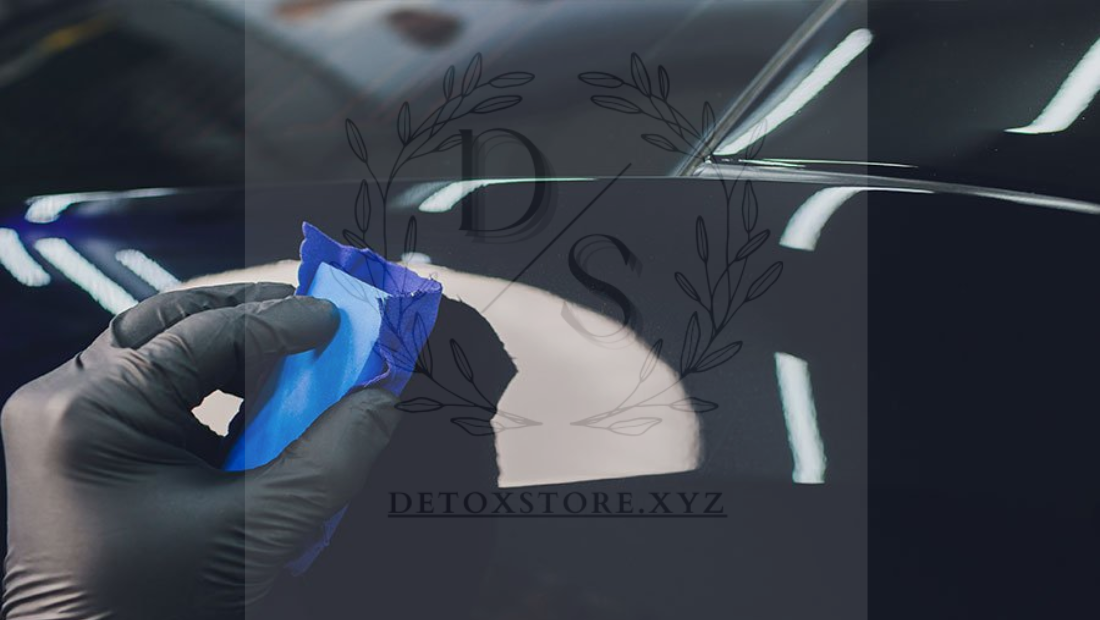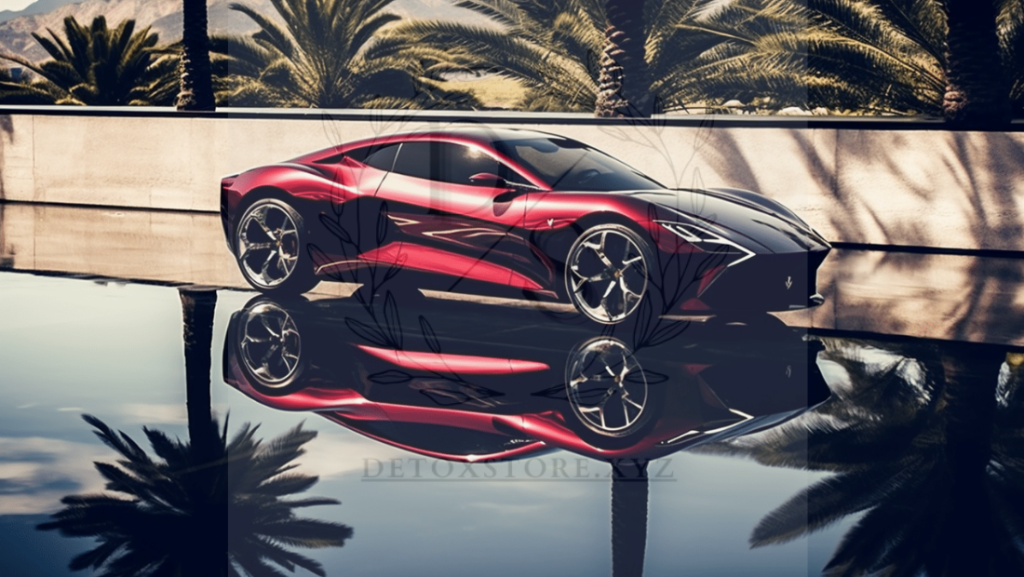In the world of automotive care, ceramic coating hydrophobic technology has emerged as a game-changer for car enthusiasts and owners alike. Not only does this technology provide a high-gloss finish that enhances the visual appeal of your car, but it also offers unmatched protection against the elements. Whether you’re dealing with water spots, dirt, or environmental contaminants, ceramic coatings make maintenance easier and more efficient. In this guide, we’ll explore how ceramic coating hydrophobic technology works, the benefits it offers, and why it’s the ultimate solution for easy car maintenance and long-lasting protection.
Table of Contents
ToggleWhat is Ceramic Coating Hydrophobic Technology?
Ceramic coating is a liquid polymer applied to the exterior of your vehicle that bonds with the paintwork to form a protective layer. This coating is made from compounds like silica (SiO2) or quartz, which are key to its effectiveness. The primary benefit of ceramic coating hydrophobic technology is its ability to repel water and other contaminants from the surface of your car.
When the coating is applied to your vehicle, it creates a smooth, hard surface that makes it difficult for water to adhere to the paint. This is known as the hydrophobic effect, where the water forms beads and rolls off the surface rather than sitting on it. This effect helps keep your car cleaner for longer and reduces the need for frequent washing and maintenance.
How Does Ceramic Coating Hydrophobic Technology Work?
At the core of ceramic coating hydrophobic technology is the way the molecules in the coating interact with the paint surface. Here’s a breakdown of how it works:
- Surface Bonding
When you apply a ceramic coating to your car’s paint, the liquid bonds with the microscopic pores and imperfections on the surface. This bonding creates a layer that is stronger than traditional waxes or sealants, offering superior protection. - Water Repellency
The hydrophobic properties of ceramic coatings come from the coating’s ability to create a surface that is water-repellent. When water comes into contact with the surface, it forms beads rather than spreading out, causing the water to roll off the vehicle. This makes it harder for contaminants like dirt, bird droppings, and tree sap to stick to the surface, making it easier to clean. - Durability and Longevity
Unlike waxes and sealants that wear off after a few washes, ceramic coatings provide long-lasting protection. The bonding between the coating and the paint can last anywhere from 2 to 5 years, depending on the product and maintenance. This provides a much more durable layer of protection that significantly reduces the need for reapplication. - Scratch Resistance
Although ceramic coatings are not completely scratch-proof, they do offer a layer of protection against light scratches and swirl marks. This is because the coating hardens the paint’s surface, making it less prone to damage from everyday driving. - UV Protection
Ceramic coatings also offer UV protection. The sun’s UV rays can cause your car’s paint to fade and oxidize over time. The hydrophobic coating forms a protective barrier against UV rays, preventing oxidation and preserving the color and gloss of the paint.
Benefits of Ceramic Coating Hydrophobic Technology

The advantages of ceramic coating hydrophobic technology extend far beyond just keeping your car shiny. Here’s a closer look at the key benefits this technology offers:
- Easy Cleaning and Maintenance
One of the most significant advantages of ceramic coatings is how easy they make cleaning your car. The hydrophobic effect ensures that dirt, water, and grime are less likely to stick to the surface, which means less time spent scrubbing and more time enjoying your car. Water simply rolls off the surface, carrying debris with it, leaving your car cleaner for longer. - Long-Lasting Protection
Unlike traditional waxes, which need to be reapplied every few months, ceramic coatings can last up to 5 years with proper care. This means that once applied, you get years of protection from the elements, making it a more cost-effective and long-term solution. - Enhanced Aesthetic Appeal
Ceramic coatings enhance the paint’s appearance by adding a deep glossy finish. This high-gloss effect is more durable and long-lasting than the shine provided by waxes, and it helps maintain your car’s showroom-quality look for years. - Improved Scratch Resistance
While no coating can make your vehicle completely impervious to scratches, ceramic coatings provide a protective layer that helps resist minor abrasions caused by everyday driving. This means fewer visible swirl marks or scratches, which is especially beneficial for maintaining the integrity of your car’s paint. - Chemical Resistance
Ceramic coatings protect your car from various harmful chemicals, including bird droppings, tree sap, road salts, and other environmental contaminants. These substances are less likely to damage the paint when your car is coated with a hydrophobic layer, making it easier to clean and maintain. - UV Protection
UV rays from the sun can damage your car’s paint by causing it to fade and oxidize. Ceramic coatings act as a protective barrier against UV radiation, keeping your car’s paint vibrant and shiny over time, even after prolonged exposure to the sun. - Better Hydrophobic Performance in Wet Conditions
In rainy or snowy conditions, the hydrophobic properties of ceramic coatings make it easier for water to bead and roll off the surface of your car, improving visibility and reducing the risk of water spots. It’s especially helpful in reducing the amount of time you need to spend drying your car after a wash or in wet weather.
How to Apply Ceramic Coating Hydrophobic Technology
Applying ceramic coating with hydrophobic technology requires careful preparation and attention to detail. Here’s a step-by-step guide to applying it correctly:
- Prepare the Surface
The first step in applying ceramic coating is thoroughly cleaning the car. Wash it to remove dirt and debris, then use a clay bar to remove embedded contaminants. If the car has any imperfections like scratches or swirl marks, consider polishing the paint to create a smooth, even surface for the coating. - Dry the Vehicle
Once the surface is clean, make sure the vehicle is completely dry before applying the ceramic coating. Any leftover moisture can affect the bonding process and prevent the coating from adhering properly. - Apply the Coating
Using an applicator pad, apply the ceramic coating in small sections at a time. Work in a crosshatch pattern to ensure even coverage. Be careful not to apply too much product, as it may leave residue or streaks. - Buff the Coating
After applying the coating to a section, use a clean microfiber towel to buff the surface and remove any excess product. This step helps ensure an even finish and enhances the glossy effect. - Allow to Cure
Once the entire vehicle is coated, allow the ceramic layer to cure. This typically takes anywhere from 12 to 24 hours, depending on the product. Avoid getting the vehicle wet during this period to ensure the coating fully bonds to the paint. - Maintenance
To maintain the hydrophobic properties and ensure long-lasting protection, wash your car regularly using a pH-balanced car shampoo. Avoid harsh chemicals that can break down the coating over time. Additionally, it’s a good idea to apply a booster product every few months to maintain the coating’s effectiveness.
DIY vs. Professional Application
When it comes to applying ceramic coatings, there are two main options: DIY kits and professional services. Each has its own set of advantages and drawbacks.
- DIY Application
DIY ceramic coating kits are widely available and provide a more cost-effective option for car owners who are comfortable applying the coating themselves. These kits usually come with clear instructions, and many are user-friendly. However, the application process requires careful attention to detail, and improper application can lead to streaking or uneven coverage. - Professional Application
For those who want the best possible results, professional ceramic coating application is the way to go. Professional detailers have the experience and equipment to ensure the coating is applied perfectly, providing optimal protection and shine. While professional application is more expensive, it’s often worth the investment for those who want flawless results and long-lasting protection.
How Long Does Ceramic Coating Last?
One of the key benefits of ceramic coatings is their durability. With proper care, a high-quality ceramic coating can last anywhere from 2 to 5 years. Factors that affect the longevity of the coating include the quality of the product, how well it was applied, and how well the car is maintained. Regular washing, avoiding harsh chemicals, and applying a maintenance booster product can help extend the life of the coating.
Conclusion: The Ultimate Solution for Car Protection and Maintenance
Ceramic coating hydrophobic technology offers a revolutionary way to protect your vehicle’s paint while making maintenance easier and more efficient. The hydrophobic effect repels water, reduces the accumulation of contaminants, and gives your car a beautiful high-gloss finish that lasts for years. With its durability, UV protection, scratch resistance, and easy cleaning benefits, ceramic coating has become the go-to solution for car owners who want to preserve the appearance and value of their vehicle.
Whether you choose to apply the coating yourself or have it professionally done, ceramic coatings provide exceptional long-term protection that keeps your car looking pristine with minimal effort.

